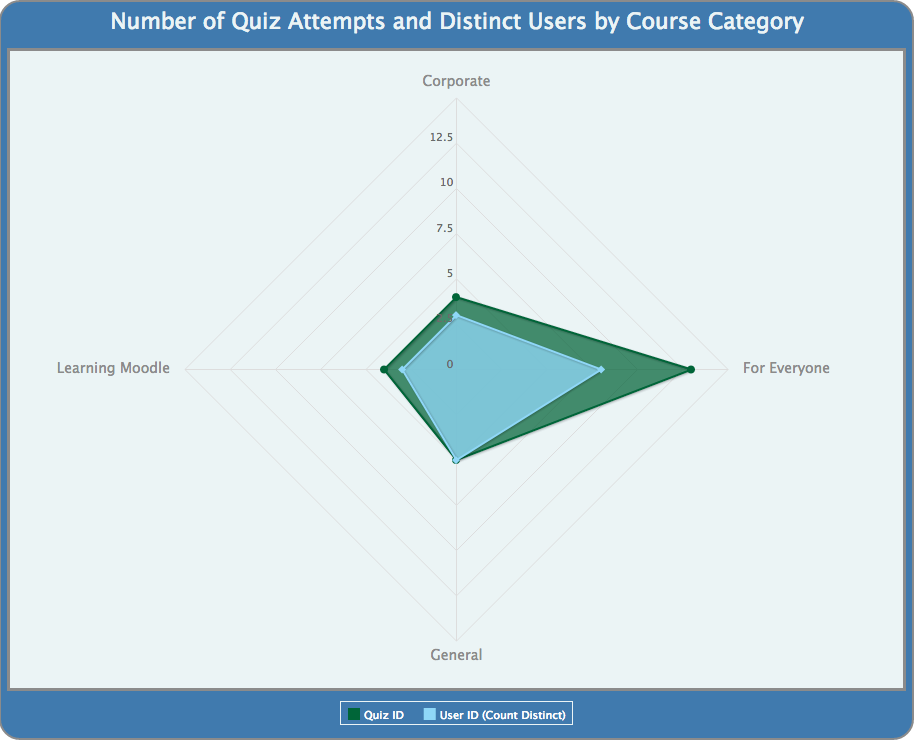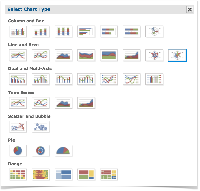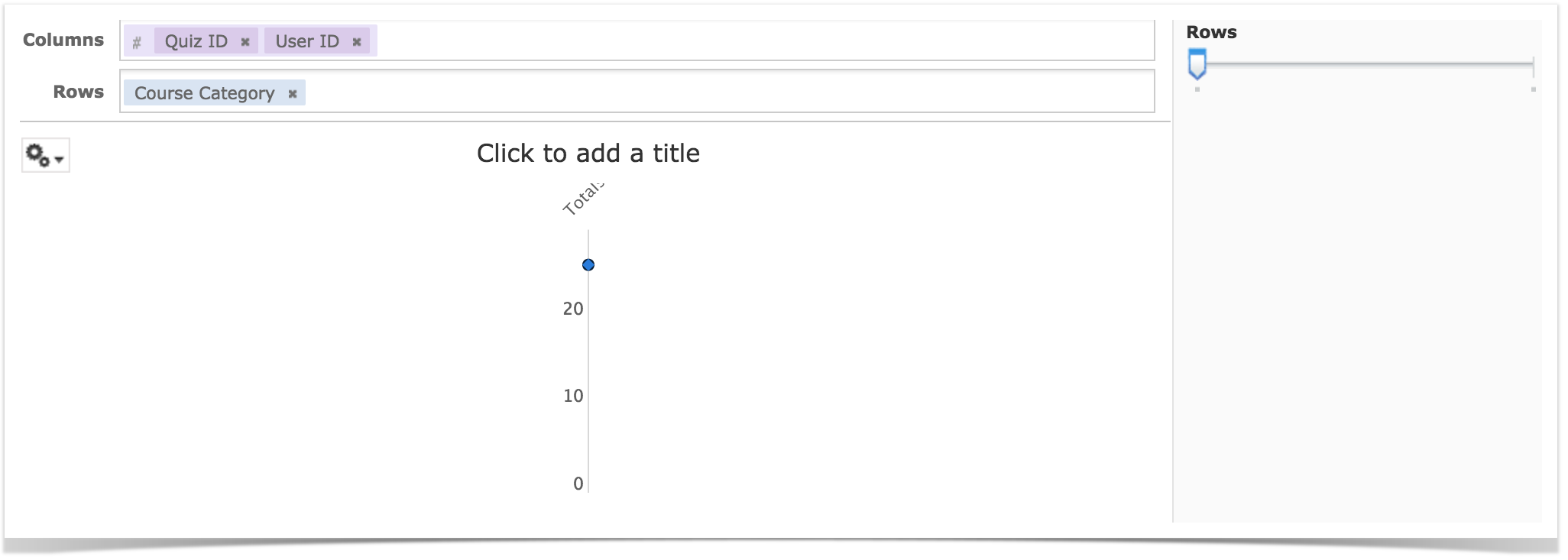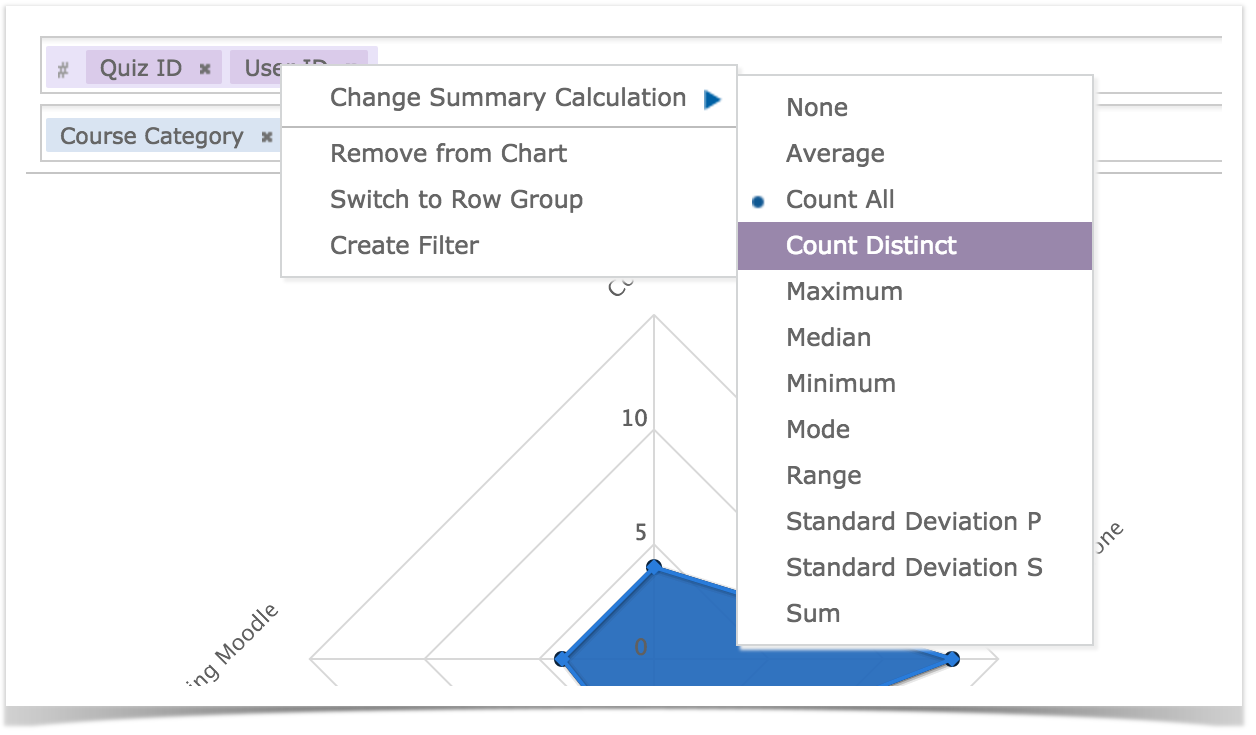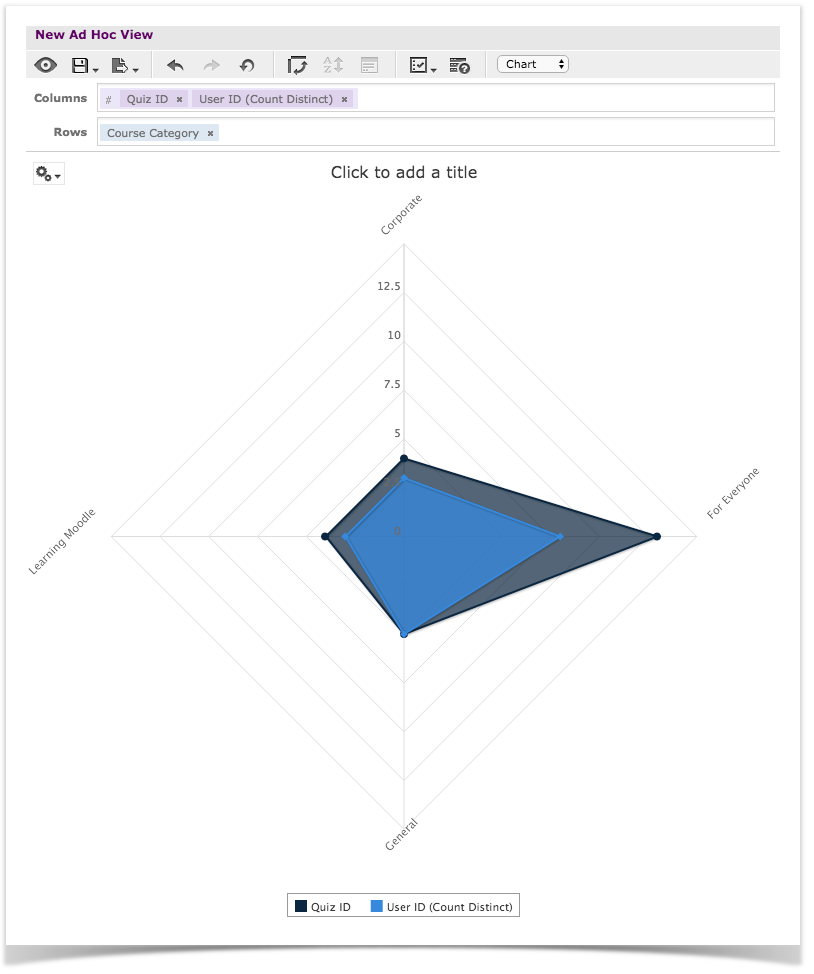For the purposes of this case study, we will create a Spider Area Chart using the Quiz Domain.
To create a Spider Chart in the Ad Hoc Editor, complete the following steps:
- From the Home page, select Create > Ad Hoc View from the main menu bar. The Select Data wizard appears.
- In the Select Data wizard, select the Quiz Domain.
- Click Choose Data. The Choose Data page opens.
- In the column between the Source and Selected Fields panels, click the Select All button to select all data from the Quiz Domain for availability in your Ad Hoc View. The Course, User, and Quiz sets will move from the Source to Selected Fields panel.
- Click the OK button. The Ad Hoc Editor opens.
- In the Ad Hoc Editor top navigation, select Chart from the View Type list:
- Click the Chart Detail Selector icon and select Chart Types. The Select Chart Type dialog appears:
- In the Line and Area section, select the Spider Area chart type (outlined in blue in the previous image).
- Close the Select Chart Type dialog.
- To successfully create a Spider Area Chart, you will need at least two measures and a single field.
For the purposes of this case study, drag the following Quiz Domain items from the Fields and Measures panels into the Columns and Rows boxes, respectively:- Quiz ID: From the Quiz set in the Measures panel. Drag this measure into the Columns box. This will display the number of quiz attempts, as represented by ID.
- User ID: From the User set in the Measures panel. Drag this measure into the Columns box. This will display the number of users, as represented by ID.
- Course Category: From the Course Category set (within the Course set) in the Fields panel. Drag this field into the Rows box. This will categorize each quiz attempt through a predefined course category.
Once these two measures and this single field are added, you will see the initial stages of your Spider chart:
- In the Filters panel (pictured in the right-side of the previous image), drag the Rows slider all the way to the right, enabling a row for every course category.
- In the Columns box, right click User ID and navigate to Change Summary Calculation > Count Distinct:
Changing the summary calculation from Count All to Count Distinct will lead your Spider chart to display the number of unique users who have completed a quiz, instead of a count of all users, which could have counted the same user more than once.
You will now see a completed basic Spider Area Chart of your distinct users and quiz attempts by course category:
For specific formatting commands to replicate the appearance of the chart pictured at the beginning of this case study, see the Spider Area Chart Formatting article.
